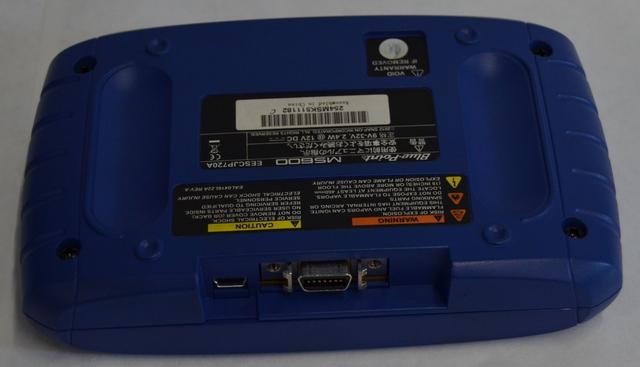The Snap-on Solus Pro is a powerful diagnostic tool for professional automotive technicians. However, its high price tag often leads mechanics to explore alternative options. This article examines the capabilities of the Solus Pro and compares it to other diagnostic solutions, including budget-friendly alternatives like the Microscan III and OBD2 scanners paired with smartphone apps.
Exploring Alternatives to the Snap-on Solus Pro
For those seeking a more affordable alternative to the Snap-on Solus Pro, older diagnostic tools like the Snap-on Microscan III can provide a viable solution, especially when equipped with the necessary OBD1 adapter kit. While the Solus Pro offers advanced features and comprehensive vehicle coverage, the Microscan III can still handle many diagnostic tasks on older vehicles.
 Microscan III OBD connector
Microscan III OBD connector
One key consideration when using the Microscan III is its compatibility with OBD1 adapters. Blue-Point, the manufacturer of the Microscan, designed their grey OBD1 adapters to work exclusively with Microscan scanners. This incompatibility with Snap-on’s red and black OBD1 adapters necessitates sourcing the correct adapter for seamless operation. Interestingly, the Microscan Pro utilizes a standard 15-pin D-sub cable for its OBD1 kit, similar to many other Snap-on scanners, including the MT-2500, showcasing variations even within the Snap-on product line. The Microscan III, however, uses a smaller D-sub connector.
OBD2 Scanners and Smartphone Apps: A Budget-Friendly Approach
Beyond dedicated scan tools, the combination of an OBD2 scanner and a smartphone app like OBD Fusion provides a remarkably cost-effective solution for basic diagnostics. With an ELM327 WiFi module costing around $5 and the app itself priced under $3, this setup offers live data, graphing capabilities, diagnostic trouble codes, and other functionalities often surpassing those of entry-level OBD2 scanners. The accessibility of Android devices further enhances the usability of this option.
Microscan III vs. Microscan Pro: Understanding the Differences
Snap-on offered two main Microscan models: the Microscan Pro (EESP717) and the Microscan III (EESP720). Both support OBD1 vehicles, but key differences exist. The EESP717 includes a battery compartment for standalone operation, whereas the EESP720 relies on OBD or USB power. This distinction impacts portability and usage scenarios. Besides the power source and OBD connector styles, further differences between these two models remain unclear. It is likely that the Microscan III was primarily positioned to compete with consumer-level OBD1/OBD2 scanners with live data capabilities from brands like Innova.
Conclusion: Choosing the Right Diagnostic Tool
The optimal diagnostic tool depends on individual needs and budget. While the Snap-on Solus Pro represents a top-tier solution, alternatives like the Microscan III, particularly with its OBD1 capabilities, or even a simple OBD2 scanner coupled with a smartphone app, can offer substantial value and functionality at a fraction of the cost. Understanding the capabilities and limitations of each option ensures informed decision-making for automotive professionals and enthusiasts alike.
